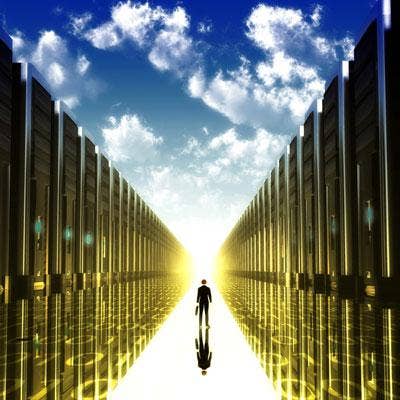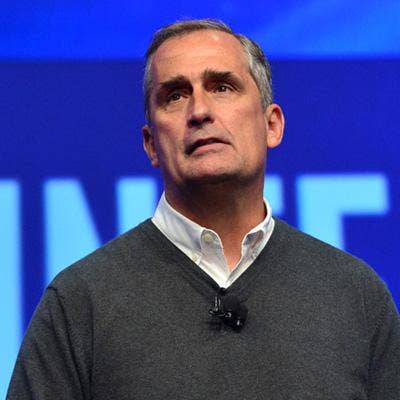CJ Bruno On The 'Limitless Opportunity' For Intel's Channel Partners
Driving Growth Through Innovation
CJ Bruno, Intel's corporate vice president and general manager of global accounts, speaks with CRN about the 'limitless opportunity' he sees for the company's partners as they transform their business and drive innovation in data center, compute, storage and networking.
Get more of CRN's coverage of the 2017 Intel Solutions Summit, here.

What role do you see channel partners playing for Intel in the coming year?
We're more excited about working with our channel partners than ever before. As we diversify our business, there's still a plethora of opportunities in the traditional client compute space. There's so much innovation going on, with gaming, 2-in-1s, education devices, small-form-factor desktop, so much innovation in the traditional channel client business. We have our focus on cloud, and all these connected devices are generating enormous amounts of data, and there's huge opportunities for channel partners in compute, storage and networking.
We also are focusing on the Internet of Things space -- we're getting more mature all the time at delivering real solutions for very specific workflows in retail, health care, financial services, oil and gas, or manufacturing -- real solutions edge-to-cloud [that are] solving real business problems. The data center continues to explode, which gives the channel opportunities in compute, storage and networking. In all three of those businesses, we've never been more committed to or dependent on our channel.
Then, you can sprinkle in two more businesses -- the memory technology business, which helps accelerate all the businesses I just talked about, particularly client and data center; and the use of FPGAs [field programmable gate arrays], which also helps accelerate our data center business. So the channel has opportunities around the three core businesses, as well as those two acceleration businesses.

What key message can partners take away from Intel Solutions Summit this year?
The No. 1 message is limitless opportunity. We want and need all our channel partners to lean in with us and really drive the innovation in client, really transform their business to take advantage of the exploding opportunities in data center, compute, storage and networking. And we want them to help us deliver real Internet of Things solutions from edge to cloud, to get off the promise of Internet of Things and make it a reality. We know we're a building block supplier to our channel partners, so we have respect for them and really are trying to tool them up in those three big areas so they can capitalize on breakthrough innovation happening in the client, the explosion in the data center, and make the Internet of Things a reality.

What opportunities will channel partners see in the Internet of Things space?
We're seeing more and more of our channel partners morphing themselves to be experts and specialize in certain verticals and applications, all the way down to the use cases. For instance, we're working on a retail inventory replenishment system. Technology is required not only in a retail brick-and-mortar store, but it's also required to have the right applications, all the way back to the data center and distribution center that will replenish that brick-and-mortar store. So, we have many examples of partners digging into inventory monitoring that triggers the need to refill the inventory stock in the central distribution center. The important thing to remember is there are infinite use cases and we're seeing more channel providers use standards technology compute capabilities over the years and apply it to those verticals.

What is the company doing with larger global accounts in the Internet of Things?
We're also spending more time with companies like Honeywell, Bosch, Siemens, BMW, GE. These companies are the bellwethers of the Internet of Things. They have a huge amount of resources focused in areas like energy, oil and gas, digital factories. They're totally transforming manufacturing shop floors. It's so important to work with ecosystem large global accounts, as well as channel partners. To get these solutions deployed far and wide takes the entire ecosystem, including the channel. We work with those large global accounts to embed our Intel bases and technologies into their solutions. Siemens, for example, is delivering manufacturing automation solutions. They need partners in the channel, like our friends at Hewlett Packard Enterprise, Dell and Lenovo need channel partners. That's why I'm excited to tool up the channel base and include our global accounts in that interaction, like we have with global accounts serving the client and data center businesses. We can deliver more value through the channel through those partnerships.

What are some of the biggest vertical opportunities for the Internet of Things?
There's a handful. I would definitely call out the industrial and transportation spaces, as well as retail solutions. The industrial one is more straightforward. For transportation, think of freight solutions for shipping cargo overseas, and over land, think about monitoring the inventory as it moves from Point A to Point B. We're seeing a lot of movement in energy, whether it's oil and gas, the smart grid. These companies have been in these industries for decades; they are the established leaders in these segments. Partnering with them and the channel gives us a footprint we would not have normally had.

What areas is Intel investing in within its client compute segment?
First and foremost, the gaming space has been explosive. We're seeing the advent of traditional gaming migrating to E-sports. Secondly, we have all sorts of desktop-form-factor innovation, from credit-card-size computers, to small-form-factor desktops, to incredible All-In-Ones. Three, we have the 2-in-1 reality that's established itself over the past few years -- that is getting more and more popular.

What can channel partners expect for data center growth?
We're serving up more ingredients for the data center than we ever have before. That goes well beyond the traditional Xeon processor, with accelerators like Xeon Phi and our FPGA product line, all extending our ability to provide the best compute solution on earth in the data center. We have all kinds of networking technologies, like Ethernet and its acceleration as we go toward larger bandwidth performance there. We have higher-performance fabric like Silicon Photonics. We have high-speed interconnect Omni-Path solutions, and our SSDs, which are literally flying out of the factory as we make them.
Whether it's compute, storage or networking, we have a huge array of ingredients and technologies around our rackscale design concept, which is truly the most TCL [tool command languge]-efficient, most compute efficient way to deliver on the promise of software-defined infrastructure.
Rackscale design allows the channel to work with their customers and their OEM partners to deliver these software-defined pools of compute, storage and networking that are easily accessible in the data center, with the best performance and lowest total cost of ownership that you can get in the marketplace. For partners, the data center is a candy store.

Talk about Intel's investment in a number of new technologies, such as the moves the company has made in artificial intelligence and the connected car space.
As [Intel CEO] Brian [Krzanich] (pictured) has talked publicly about, the strategy I just outlined is centered around data, and the fact that when the world becomes smart, all these smart devices generate an enormous amount of data that needs to be computed, stored and moved around the network. You need to inject intelligence into the network so that compute can happen back at the cloud and data center, but at the edge as well. These are all centered around that data concept where we provide the building blocks for not only the smart device on the edge, but the networking and storage compute building blocks that are needed to analyze and process all that data.
The artificial intelligence focus, for example -- we have an enormous array of assets in the artificial space, well beyond our normal Xeon, Xeon Phi and FPGA products. We have Movidius, we have our RealSense cameras. These help computers see, hear and allow touch to be integrated into smart devices. A great example of that is autonomous cars, where you now add vision to the 'edge device.' Imagine four, five, six 3-D-depth cameras on a vehicle, that's just one sensing system. We have radar, getting that car from Point A to Point B requires an enormous amount of silicon in the car at the edge to make sure it can safely make that journey.
Autonomous cars are only one example. If you think of robotics to manufacturing floors, there's an endless amount of applications requiring artificial intelligence and the ability to handle the data coming up from there.

What's your final message for Intel's channel partners?
We thank them for their partnership all the time. As we diversify our business, we're more and more dependent on our channel friends, so I just ask that they lean in on all three of our core businesses that we talked about here, and we're going to work very hard to grow those three businesses -- client, data center and the Internet of Things.